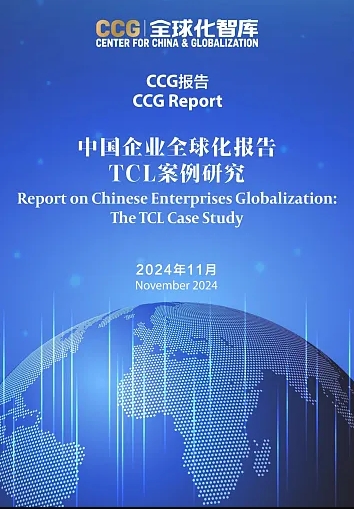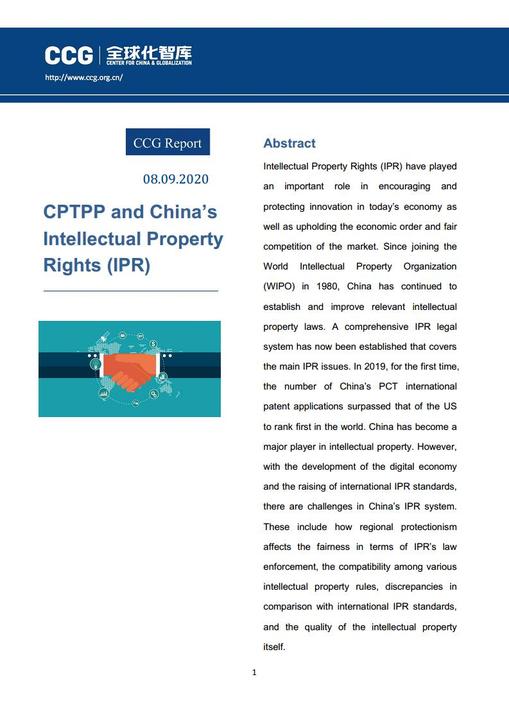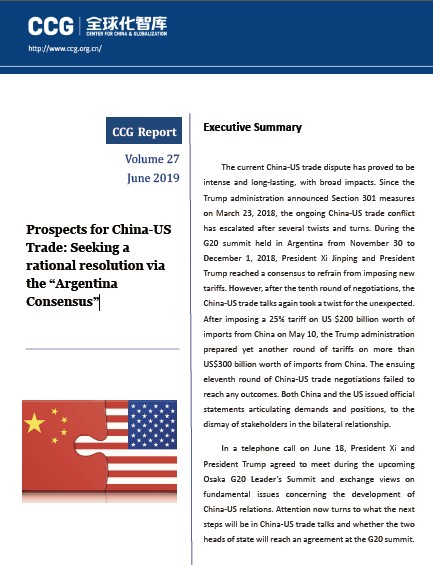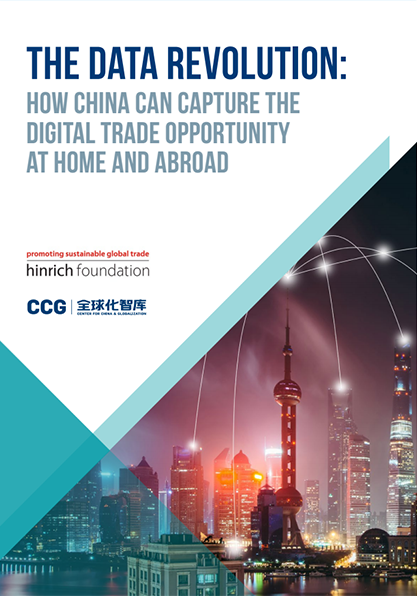Report on Chinese Enterprises Globalization: The TCL Case Study


In an era defined by de-globalization, Chinese enterprises face unprecedented hurdles in their pursuit of global expansion. The shifting global trade landscape, shaped by U.S.-China trade tensions, the COVID-19 pandemic, geopolitical conflicts, and the rising tide of protectionist policies in major economies, has disrupted the traditional frameworks that once propelled globalization. Free trade systems and collaborative global supply chains, once cornerstones of international trade, have been increasingly eroded. Governments worldwide are introducing higher tariffs, intensifying security reviews, and enforcing localization requirements, creating significant obstacles for Chinese businesses entering international markets. Concurrently, developed markets have elevated expectations for technology, branding, and regulatory compliance, while emerging economies push foreign firms to contribute to local value creation through policies encouraging investment and industrial development.
These developments render the traditional low-cost expansion model unsustainable for Chinese enterprises. Adapting to these challenges requires a reassessment of globalization strategies to address trade barriers, regulatory complexities, and evolving market demands. This report delves into theoretical insights and practical case studies to offer a roadmap for navigating the complexities of de-globalization, emphasizing strategies that enable sustainable global growth.
Balancing Global Integration and Local Responsiveness
One of the most critical challenges in global business lies in balancing the efficiencies derived from global integration with the need for localized responsiveness. Global integration allows companies to leverage economies of scale, improving operational efficiency and reducing costs. However, local responsiveness demands flexibility to cater to the unique needs of individual markets, encompassing cultural, regulatory, and consumer preferences.
The matrix model proposed by Harvard Business School professor Christopher Bartlett and London Business School professor Sumantra Ghoshal provides a robust framework for addressing this dichotomy. Their model categorizes globalization strategies into four distinct types: international, multidomestic, global, and transnational strategies. Over the past four decades, Chinese enterprises have progressed from the export-driven international strategy to a global strategy that emphasizes technological and brand development through cross-border mergers and acquisitions (M&A). As de-globalization pressures mount, these firms are now exploring transnational strategies to adapt to increasingly fragmented and volatile global markets.
The Evolution of Chinese Globalization Strategies
International Strategy: The Low-Cost Advantage
During the initial phase of globalization, Chinese companies relied on their cost advantages to penetrate international markets with standardized products. This strategy facilitated rapid market entry, established positions within global supply chains, and provided valuable capital and operational experience. However, the focus on price competition often came at the expense of branding, technology, and service innovation, making it difficult to meet the higher expectations of developed markets.
For instance, TCL entered the Vietnamese market with innovative lightning-resistant televisions tailored to local environmental conditions, backed by a robust distribution network. While this strategy proved successful in Vietnam, TCL faced significant challenges in penetrating Western markets due to limited brand recognition and technological capabilities.
Global Strategy: The Shift to Cross-Border M&A
In the early 21st century, as globalization deepened, Chinese enterprises encountered new challenges, including technical barriers, brand deficits, and management inefficiencies. To address these obstacles, many companies adopted global strategies centered on cross-border M&A to accelerate technological transformation and market expansion.
A landmark example is TCL’s 2004 acquisition of Thomson’s television business. This move marked TCL’s shift from an export-driven international strategy to a global strategy. The acquisition granted TCL access to developed markets, such as Europe and North America, which had previously been difficult to penetrate due to high barriers to entry. According to Liu Chijin, Chairman and Founding Partner of the Pan-Pacific Group and Senior Advisor at BCG Group, the acquisition achieved two key strategic purposes. First, it helped TCL establish itself as the world’s leading television manufacturer by market share, significantly elevating its brand visibility outside China. Second, it secured TCL’s access to critical resources while allowing the company to leverage its low-cost production advantages to compete globally.
Despite its strategic value, the integration of Thomson presented significant challenges. TCL underestimated the speed of technological transformation from CRT to LCD displays, which diluted its operational cost advantages and strained its financial performance. Furthermore, as Liu Chijin noted, the European work culture, labor laws, and management styles were vastly different from those in Guangdong, adding layers of complexity to the integration process.
However, Liu emphasized that these challenges were a necessary part of TCL’s international learning curve and ultimately proved invaluable. Lessons learned during the Thomson acquisition directly influenced TCL’s approach to future global operations. For example, TCL’s factories in Mexico and Poland, which Liu highlights as success stories, now serve as benchmarks for effective cross-cultural management and localized production. These facilities are not only highly efficient but also deeply integrated into their respective markets, contributing to local job creation and economic development.
Toward Transnational Strategies amid De-globalization
As globalization faces increasing fragmentation, the limitations of global strategies have become evident. Rising protectionism, supply chain vulnerabilities exposed by the COVID-19 pandemic, and heightened localization demands in emerging markets necessitate a pivot toward transnational strategies. These strategies aim to integrate global resources while tailoring operations to local market conditions, enabling efficient resource allocation and effective responses to diverse regulatory and consumer needs.
TCL’s exploration of transnational strategies offers valuable lessons. Its approach to “glocalization” embodies three core principles:
1.Global Resource Integration and Local Production: By leveraging global resources while maintaining localized production, TCL reduced costs and enhanced efficiency.
2.Localized Branding Strategies: TCL integrated local cultural elements into its branding, fostering trust and recognition in various markets.
3.Long-Term Localized Operations: The company’s sustained commitment to local markets strengthened its resilience to policy risks and built enduring market relationships.
This model not only strengthened TCL’s competitive advantage but also contributed to job creation and economic development in host countries, fostering a win-win scenario for businesses, China, and local economies. By deeply embedding itself in these local markets, TCL not only improved its supply chain efficiency but also built strong relationships with local governments and communities. These successes underscore the importance of long-term commitment and strategic localization as cornerstones of global competitiveness in a de-globalizing world.
Strategic Recommendations for Chinese Enterprises
TCL’s success in adopting transnational strategies underscores the importance of combining global resource integration with local adaptability. The company’s ability to leverage its global supply chain while tailoring operations to the needs of local markets has proven essential in navigating the challenges of de-globalization. Drawing from such experiences, Chinese enterprises can develop sustainable globalization models that address both market complexities and regulatory demands. Building on these insights, the Center for China and Globalization (CCG) proposes five actionable strategies to help Chinese businesses thrive in this shifting landscape:
1.Joint Ventures and Localization: Partner with local firms to establish production facilities, promoting market integration and risk sharing.
2.Regional Supply Chain Optimization: Develop regional manufacturing hubs to enhance supply chain resilience and responsiveness.
3.Culturally Aligned Branding: Incorporate local cultural elements into branding to strengthen market trust and competitiveness.
4.Long-Term Market Commitment: Deepen engagement through localized investments to enhance policy adaptability and build robust brand foundations.
5.Enhanced Compliance and Social Responsibility: Foster positive corporate reputations through job creation and community support, reducing market entry barriers and enhancing brand credibility.
Looking Ahead: Building a Sustainable Globalization Model
The strategies outlined above not only equip Chinese enterprises to navigate the challenges of de-globalization but also lay a solid foundation for long-term growth and value creation. By embracing transnational strategies and learning from pioneers like TCL, companies can enhance their global competitiveness through technological innovation, localized production, and brand building.
As the global trade landscape continues to evolve, the ability to balance global integration and local responsiveness will be critical for sustaining international growth. By fostering win-win outcomes through technology, branding, and cultural integration, Chinese enterprises can achieve sustainable success and contribute to global economic collaboration.
Through these efforts, Chinese firms have the potential to redefine globalization, shaping a future where business strategies not only overcome de-globalization challenges but also promote shared prosperity and mutual understanding on the international stage.







